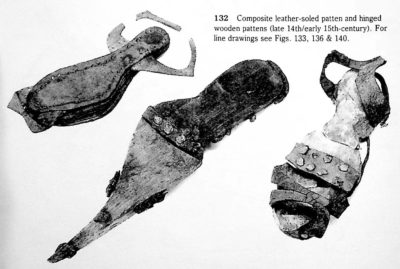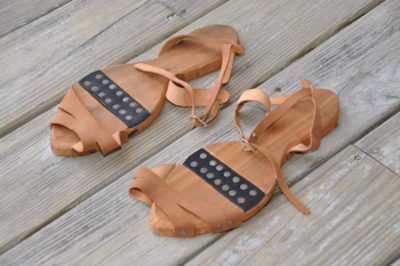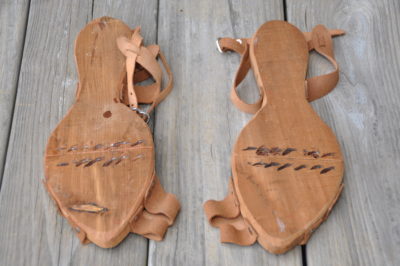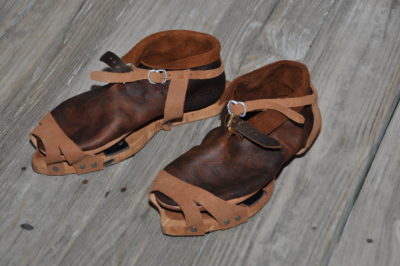Pitter Patter of Pattens
By the 13th century, people strapped blocks of wood to their feet so that they could keep their shoes clean of mud and muck. The English word “patten” apparently derives from a French term for “paw” or “hoof.”
Early pattens looked more like bricks with short legs. Some later ones, such as these, were more like sandals. Later pattens could also be quite elaborate in shape and at the extreme could be ludicrously high, being used by Italian courtesans to stand above the crowd. They were called chopines in that case.
Like lasts, pattens wear out and make good firewood, so relatively few of them have survived.
See Goubitz Type 110 (pp. 249-266) as well as Grew and de Neergaard (pp. 91-101) for images covering the range of shapes and styles of pattens.
Back in 2015...
Years before learning to make shoes, I made this pair of pattens to wear with some shoes that I had purchased.
Making these patterns did not take long, and the materials are inexpensive. No special skills or materials are needed to make these so I encourage you to try crafting your own.
The sole is cut into two pieces of a hardwood (a softwood, such as pine, will wear out more quickly walking on stones and pavement). Make the wood components a little bigger than the sole of your shoe.
To allow a more comfortable walking gait, the sole is hinged with a thick piece of leather. I used an old belt.
The hinge lies in a groove cut to the depth of its thickness in the two pieces of the sole, where they meet.
To hold the hinge leather in place, drive nails through it into the bottom of the grooved area, half on each piece of wood.
You will need a couple of small pieces of leather to make the front toe hold and the heel hold, as well as a strap to go over the ankle.
You can tie the over-ankle strap, or use a pewter buckle as I did.
The straps are held to the sole with nails driven into the side of the thick sole. It's probably best to drill a hole there first in order to avoid splitting the sole.
It should be emphasized that there were many kinds of pattens in various shapes and heights. The main idea is to elevate your foot with a block of wood that stays attached when you walk.

The pattern for my patten straps was graciously provided by Master Roberto di Milano.
Last updated April 11, 2019.



